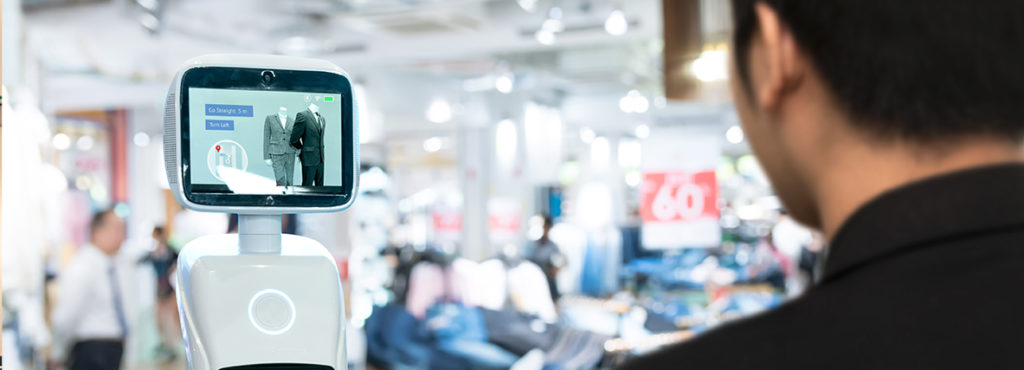
Robotics in retail
Retail, an exacting industry with low margins and boundless competition, is the graveyard of irrational exuberance. Note the recently deceased Amazon Dash button, which was supposed to usher in a utopia of frictionless retail. However, robotics in retail is an idea whose time has come. In October 2018 Amazon increased its minimum wage to US$15, nearly twice that of the federal minimum of US$7.25. In an industry with margins ranging from 0.5% to 4% (and where staff costs are the largest component of operational costs), that’s a fait accompli delivered to every other retailer. There is only one way in-store and warehouse automation could go – up.
Any mention of robotics conjures an apocalyptic image of anthropomorphic robots rendering store clerks obsolete. But current initiatives are mostly operational and modest in scope. Walmart and Target have hired robots to scan shelves to spot out of stock situations. The robots are without appendages and cannot restock the shelves. It’s purely about detection of replenishment opportunities. Such robots differ in terms of how autonomous they are in terms of mapping out the store landscape and moving around without human guidance. At any rate, they improve accuracy and reduce SG&A, and in an industry as cut throat as retail every bit helps. Suboptimal shelf replenishment costs retailer 4% of sales annually. The task is onerous and uninteresting for human employees. It’s a clear use case for in-store robotics.
The other use cases are usually in the warehouse. A major scenario is automatic cycle counting. Some use RFID to capture details and location of inventory, some use image processing. A few cutting-edge pilots involve drones to track inventory that has levels of storage stacked up high. Drone based solutions have been used outside the distribution centre as well, for yard management. Such technology can complete a total physical inventory in a matter of days. Doing so manually with barcode scanners and RFID scanners take two orders of magnitude more time – not just weeks, but a full month. Of course, the periodicity and coverage of cycle counting can greatly improve with such automated solutions.
However, it must also be added that supply chain leaders are not limiting themselves to better inventory accuracy with robotics. Some solutions, such as those InVia Robotics (aided by image processing), go beyond cycle counting to actual picking from warehouse shelves, and transferring the item to the packaging station or the next logical step in the fulfilment process.
However, the tech industry (and retail, in circa 2019, is a full-blown technology industry) follows the maxim if something is worth doing, it is worth going full retard over. Enter humanoid robots. Customer facing robots are one of those technologies, similar to machine translation, where 95% accuracy won’t do. It must be 99% for mainstream traction, and to cover that very steep, “death zone” between 95% and 99% it must be field tested far and wide – creating a vicious cycle that often consigns technologies to narrow niches. Japan – that utopia of tech wizardry and weirdness – have played around with humanoid robots. Exhibit A here is Pepper by Nestle, used to sell Nescafe. Pepper. Closer home, in the US, the millennial loathing of human interactions and openness to conducting their lives on software have been well documented. That line of thinking perhaps led Lowe’s to introduce the LoweBot which helps customers locate items. However, recent attempts at automation haven’t always gone as planned. Many people, millennials included, have said self-checkout solutions seemed like a crass attempt at making paying customers do the work retailers should do. Therefore, how far it will go, whether anthropomorphic in-store robots will cross the chasm (and the uncanny valley) remains to be seen.
Get in touch and let us know how we can help.